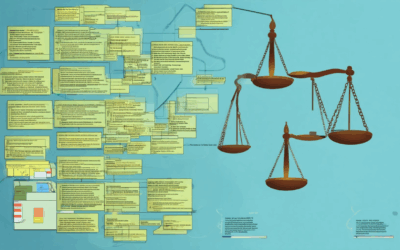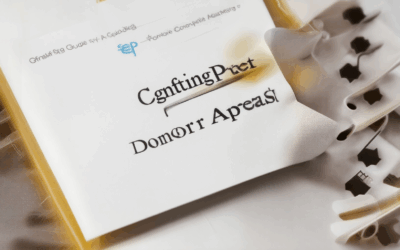For nonprofit organizations, securing the right training materials is crucial to achieving mission goals and empowering volunteers and staff. With limited budgets and often overwhelming demands, nonprofits frequently struggle to access the tools and resources needed to succeed. Whether it’s enhancing leadership skills, streamlining operations, or boosting fundraising capabilities, the right training materials can make a significant difference. In this article, we’ll explore the essential training materials nonprofits need, how to access them affordably, and how to leverage technology to stay ahead in a competitive landscape. From understanding the 33% rule for nonprofits to discovering top platforms for professional development, this guide will provide actionable insights and practical advice to help your organization thrive.
Key Takeaways
– Nonprofits Must Invest in a Robust Learning Management System (LMS): An LMS is essential for managing training programs, tracking progress, and ensuring compliance.
– Ease of Use and Affordability Are Critical: Nonprofits should prioritize intuitive interfaces and budget-friendly solutions to maximize impact.
– Mobile Access Ensures Flexibility: Trainees should be able to access materials on-the-go for convenience.
– Free and Premium Options Exist: While free LMS platforms like Moodle and Thinkific are available, premium options like Kajabi and Trello offer advanced features.
– Thinkific and MemberPress Are Top Choices for Small Nonprofits: These platforms are user-friendly and cost-effective, ideal for membership-based organizations.
– Kajabi Excels for Larger Nonprofits: Its advanced features make it a scalable option for complex training needs.
– Trello Combines Project Management with Training Tools: It’s a versatile choice for organizing tasks and tracking progress.
– Donor Management and CRM Tools Are Essential: Platforms like DonorPerfect and Salesforce streamline donor relationships and operations.
– Consider Functionality and Integration: Choose platforms that align with your organization’s goals and integrate smoothly with other tools.

The 33% Rule for Nonprofits
The 33% rule for nonprofits pertains to the percentage of support received from the general public or government entities. Here’s a breakdown:
- Threshold Definition : Nonprofits are categorized based on the percentage of their total support originating from the public or government. Specifically, if an organization receives more than 10% but less than 33.333…% (one-third) of its support from these sources, it may qualify as a public charity under certain conditions.
- Public Charity Classification : To maintain public charity status, the nonprofit must demonstrate that, considering all facts and circumstances, a substantial portion of its support comes from public sources. This is typically documented on IRS Form 990, particularly in Schedule A and Schedule B, which detail contributions and grants.
- Compliance and Consultation : Nonprofits falling into this range should consult tax professionals to ensure compliance with IRS requirements. Proper classification is crucial to avoid penalties and maintain tax-exempt status.
This rule underscores the importance of understanding funding sources and ensuring adherence to IRS guidelines for nonprofits.
How to Get Free Stuff for Nonprofit Organizations
Nonprofit organizations often face challenges in managing operations and achieving their mission goals. Fortunately, there are numerous resources available to help nonprofits operate more efficiently without spending a dime. Below is a guide to finding free tools and resources tailored for nonprofits.
Free Project Management Tools
- Trello : A flexible project management platform that offers a free version tailored for nonprofits. It helps streamline workflow and organization of tasks.
- Asana : Provides a free plan with features ideal for team collaboration and task tracking, perfect for managing volunteer efforts or small projects.
- ClickUp : Offers a free version with basic project management features, including task lists, reminders, and collaboration tools.
- Google Workspace for Nonprofits : Google provides discounted or free access to its suite of productivity tools, including Gmail, Google Drive, and Google Docs, for eligible nonprofits.
Free Communication and Collaboration Platforms
- Slack : A popular messaging app that offers a free version for teams, ideal for coordinating between staff and volunteers.
- Zoho Social : A free social media management tool that helps nonprofits manage their online presence and engage with supporters.
- Microsoft Teams : Available for free to nonprofits through Microsoft’s Philanthropy program, it offers video conferencing and collaboration features.
Free Fundraising and Donation Tracking Software
- DonorPerfect : Offers a free trial for fundraising software that includes donor management, event planning, and donation tracking.
- Charity Miles : A free platform that encourages supporters to raise funds by tracking their daily activities and earning donations.
- Fundly : A free fundraising platform that makes it easy for nonprofits to create campaigns and accept donations online.
Free Research and Data Tools
- GuideStar : Provides free access to information on nonprofit organizations, including financials and program details, which can be useful for grant research.
- : Offers free resources and tools for grant seekers, including a database of funders and grant opportunities.
- : A free tool that evaluates the transparency and impact of nonprofits, helping donors make informed decisions.
Free Training and Development Resources
- Nonprofit Leadership Institute : Offers free webinars and training materials focused on leadership development for nonprofit professionals.
- VolunteerMatch : A free platform connecting volunteers with causes, complete with training resources for managers.
- IndiGo Foundation : Provides free training programs and resources for nonprofit leaders, covering topics like fundraising and program evaluation.
Free Legal and Compliance Resources
- Nonprofit Law Center : Offers free legal templates and guides for common nonprofit tasks, such as forming a board or amending bylaws.
- IRS Exempt Organization Select Check : A free tool to verify a nonprofit’s tax-exempt status.
- State Nonprofit Registrations : Many states offer free or low-cost options for registering a nonprofit to operate legally.
Free Marketing and Branding Tools
- Canva : Provides a free version of its design software, ideal for creating professional-looking promotional materials for nonprofits.
- LogoMakr : A free tool for designing custom logos and branding assets for nonprofits.
- Buffer : Offers a free plan for scheduling social media posts, helping nonprofits maintain consistent engagement with their audience.
Free Event Planning Tools
- Eventbrite : Provides a free version for organizing and promoting events, which is great for charity auctions or galas.
- Facebook Events : A free platform for creating and managing events, perfect for community fundraisers or awareness campaigns.
- Constant Contact : Offers a free trial for event marketing tools, including email invitations and ticketing.
By leveraging these free resources, nonprofits can save costs while gaining access to essential tools and services needed to operate effectively. Remember to explore niche-specific platforms and utilize free trials to find what works best for your organization.

What Nonprofits Need Most
Nonprofits require a combination of resources, expertise, and support to effectively carry out their missions. Here’s a breakdown of the key areas they often struggle with and what they need most:
- Funding and Financial Support
Nonprofits rely heavily on donations, grants, and sponsorships to sustain their operations. Access to consistent and diverse funding sources is essential for program delivery and organizational growth. Tools like grant writing resources and sponsorship strategies can significantly enhance financial stability. - Volunteer Recruitment and Management
Volunteering is a cornerstone of many nonprofits, yet finding and retaining reliable volunteers can be challenging. Effective outreach strategies, volunteer management systems, and clear communication channels are vital to building a strong volunteer base. - Access to Technology and Tools
Modern nonprofits require technology to streamline operations, engage donors, and manage programs. Affordable access to donor management software, CRM tools, and digital communication platforms can greatly improve efficiency and reach. - Strategic Planning and Impact Measurement
Strategic planning ensures nonprofits align their activities with their missions and measure success. Resources like strategic planning workshops, impact assessment tools, and consulting services can help nonprofits define their goals and track progress. - Advocacy and Policy Influence
Nonprofits play a crucial role in advocating for causes and influencing public policy. Training programs, advocacy toolkits, and digital platforms for amplifying messages can empower nonprofits to make a bigger impact. - Community Engagement and Partnerships
Building strong relationships with local businesses, schools, and other organizations can provide additional resources and visibility. Collaboration opportunities and partnership-building workshops can help nonprofits expand their networks. - Legal and Compliance Expertise
Nonprofits operate under specific legal requirements, which can be complex to navigate. Legal consultation services, compliance guides, and training sessions ensure organizations remain legally sound and trustworthy. - Networking and Knowledge Sharing
Connecting with peers and experts fosters innovation and provides valuable insights. Conferences, webinars, and online forums offer platforms for knowledge exchange and collaborative problem-solving. - Donor Relations and Stewardship
Maintaining strong relationships with donors is critical for long-term success. Resources like donor stewardship kits, personalized communication templates, and analytics tools can help nonprofits cultivate and retain loyal supporters.
By addressing these needs, nonprofits can strengthen their operations, enhance their impact, and secure a brighter future for their missions.

Best Learning Management System for Nonprofit Organizations
A Learning Management System (LMS) is an essential tool for nonprofit organizations to manage training programs, track participant progress, and ensure compliance with regulatory requirements. Given the unique needs of nonprofits, we’ve identified several top LMS platforms that cater to various organizational sizes and objectives.
Key Considerations for Nonprofit LMS:
- Ease of Use : Nonprofits often have limited technical expertise, so an intuitive interface is critical.
- Cost-Effectiveness : Many nonprofits operate on tight budgets, so affordable solutions are preferable.
- Customization : The ability to tailor the system to fit specific training needs and branding.
- Integration : Compatibility with donor management systems and other essential nonprofit tools.
- Mobile Access : Training materials should be accessible on-the-go for flexibility.
Top LMS Options for Nonprofits:
1. MemberPress
- Best For : Membership-based nonprofits.
- Features : Integrates seamlessly with WordPress, offering course creation, membership tracking, and automated email notifications. Ideal for managing memberships and delivering educational content effectively.
- Cost : Affordable pricing plans suitable for nonprofits.
- Link : MemberPress
2. Thinkific
- Best For : Small to medium-sized nonprofits seeking a user-friendly platform.
- Features : Drag-and-drop course builder, payment processing, and live webinars. Supports diverse training formats and integrates with third-party apps.
- Cost : Offers flexible pricing with a free plan for basic needs.
- Link : Thinkific
3. Trello
- Best For : Nonprofits needing a versatile project management tool with training capabilities.
- Features : Organize training tasks using boards, lists, and checklists. Collaborate efficiently with teams and track progress.
- Cost : Free version available, though premium features require a subscription.
- Link : Trello
4. Kajabi
- Best For : Nonprofits aiming for an all-in-one solution for training and marketing.
- Features : Advanced course creation, membership sites, and marketing automation. Suitable for larger nonprofits with more complex needs.
- Cost : Pricing is tiered, with options for growing organizations.
- Link : Kajabi
Choosing the Right LMS:
- Small Nonprofits : Start with Thinkific or MemberPress for simplicity and affordability.
- Medium to Large Nonprofits : Consider Kajabi for advanced features and scalability.
- Versatility : Trello offers a mix of project management and training tools, making it a versatile choice.
By evaluating these options, nonprofits can select an LMS that aligns with their specific goals, ensuring effective training delivery and improved outcomes.
Is There a Free LMS?
An LMS (Learning Management System) is a tool used to manage, deliver, and track online learning programs. While many LMS platforms offer free versions, the availability and features may vary depending on the provider. Below are some of the top free LMS options available for various use cases:
- Moodle – Known for its flexibility and extensive customization options, Moodle offers a free version ideal for educational institutions and non-profits. It supports a wide range of e-learning activities and integrates well with third-party plugins.
Visit Moodle - Thinkific – A great choice for course creators and small businesses, Thinkific provides a free tier with basic features such as course creation, student management, and analytics. It’s user-friendly and suitable for both personal and professional use.
Visit Thinkific - Canvas by Instructure – Primarily designed for higher education, Canvas offers a free version for schools and universities. It’s feature-rich and excellent for creating and managing online courses.
Visit Canvas - OpenSAP – Specializing in enterprise learning, OpenSAP offers a free trial and access to select courses. It’s a solid choice for corporate training and advanced learning management needs.
Visit OpenSAP
While these platforms provide robust free versions, consider upgrading to premium plans if you require advanced features such as video hosting, automated grading, or custom branding. Many providers also offer discounted rates for non-profits and educational institutions.

Best Platform for a Non-Profit Organization
When selecting the best platform for a non-profit organization, it’s essential to consider various factors such as functionality, ease of use, cost-effectiveness, and compatibility with the organization’s goals. Here are some top recommendations:
- Donor Management Systems: Platforms like DonorPerfect and Neon Fundraising excel in donor relationship management, offering tools for tracking contributions, managing donor interactions, and streamlining fundraising efforts.
- CRM Solutions: Salesforce is a robust CRM tool that can be customized for non-profits, aiding in donor management, volunteer coordination, and event planning. It offers extensive integrations with other essential applications.
- Project Management Tools: Tools like Trello and Asana are ideal for organizing tasks, tracking progress, and managing timelines, particularly useful for event planning and program delivery.
- Financial Management: QuickBooks is a popular choice for financial management, offering features tailored for small businesses and non-profits, including grant tracking and expense management.
- Cloud-Based Solutions: Platforms like Bloomerang and Kindful provide integrated solutions covering donor relations, membership management, and more, with scalable cloud-based access.
Consideration of ease of use, integration capabilities, cost, and support is crucial. Platforms like NPO Expert offer resources and tools tailored for non-profits, providing guides and insights to maximize impact. Security and data protection are also vital, ensuring compliance with regulations like GDPR and CCPA.
Each platform has unique strengths, so evaluating them based on specific organizational needs and preferences is recommended. Whether focusing on donor management, project coordination, or financial tracking, the right solution can significantly enhance operational efficiency and outcomes.





0 Comments